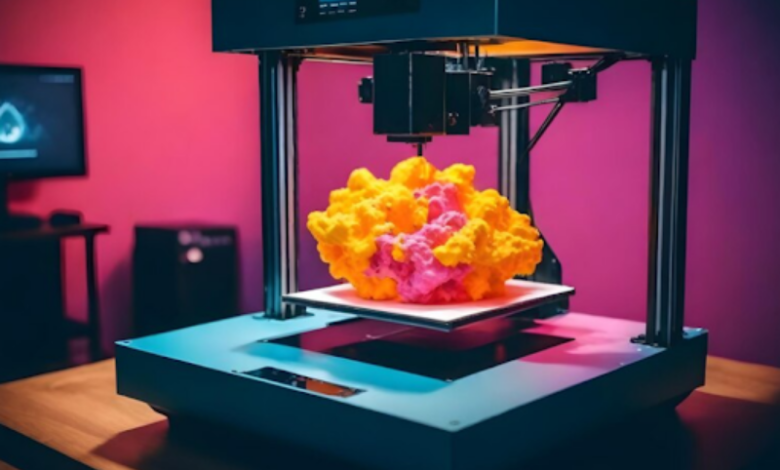Is 3D printing the future of food industry in USA?

The food industry is continuously evolving, driven by advancements in technology, changes in consumer preferences, and the need for sustainability. One of the most exciting developments in recent years is the advent of 3D printing technology. While 3D printing is often associated with manufacturing and prototyping, its application in the food industry is gaining momentum and has the potential to revolutionize how we produce, consume, and experience food in the USA.
The Concept of 3D Printed Food
3D printing in food involves creating edible items layer by layer using ingredients that are loaded into a 3D printer. These ingredients can range from chocolate and dough to pureed vegetables and proteins. The printer follows a digital design to produce complex shapes and structures that would be difficult or impossible to achieve through traditional cooking methods.
Potential Benefits of 3D Printed Food
Customization and Personalization:
3D printing allows for unprecedented customization of food. Consumers can have meals tailored to their specific dietary needs, preferences, and nutritional requirements. For instance, athletes can order protein-enriched snacks, while individuals with dietary restrictions can receive meals free from allergens.
Innovation in Culinary Arts:
Chefs and food artists can use 3D printing to experiment with new textures, shapes, and flavour combinations. This technology enables the creation of intricate designs that enhance the visual appeal of dishes, offering a unique dining experience that blends art with cuisine.
Enhanced Nutrition:
3D printers can be used to create food with specific nutritional profiles. This could be a game-changer for individuals with dietary restrictions or those seeking to optimize their health. Imagine printing a meal that perfectly matches your daily vitamin and mineral requirements.
Sustainability:
The food industry faces significant challenges related to waste and sustainability. 3D printing can help reduce food waste by utilising ingredients more efficiently. Additionally, it opens up possibilities for using alternative proteins and sustainable ingredients, such as insect-based flour or lab-grown meat, thus reducing the environmental impact of food production.
Convenience and Efficiency:
For busy households and food service providers, 3D printing can streamline meal preparation. Pre-loaded cartridges with different ingredients can quickly produce a variety of meals with minimal human intervention. This automation can also ensure consistency in quality and portion control.
Current Applications and Developments:
Several companies and research institutions in the USA are pioneering 3D food printing. For example, Natural Machines has developed the Foodini printer, which can print a range of dishes from pizza to intricate dessert designs. Meanwhile, researchers at Columbia University have been exploring the potential of printing plant-based proteins to create meat substitutes.
NASA has invested in 3D food printing technology for long-duration space missions, recognizing its potential to provide astronauts with nutritious and personalized meals that can be produced on-demand, reducing the need for extensive food storage.
Challenges and Limitations:
Despite its potential, 3D printed food is not without challenges. The technology is still in its nascent stages and faces several hurdles:
“This technology is coming and the smarter food companies and restaurants will just have to ride this innovation curve in order to stay competitive in the food space,” said Blutinger.
Regulatory and Safety Concerns:
As with any new food technology, ensuring the safety and regulatory compliance of 3D printed food is crucial. The FDA and other regulatory bodies need to establish clear guidelines and standards.
Consumer Acceptance:
There is a learning curve and potential resistance from consumers who may be wary of eating food produced by a machine. Education and awareness campaigns will be essential to increase acceptance.
Technical Limitations:
Current 3D food printers have limitations in terms of the variety of ingredients they can handle and the complexity of dishes they can produce. Ongoing research and development are needed to expand these capabilities.
The Future Outlook:
The future of 3D printing in the food industry in the USA looks promising. As technology advances and becomes more affordable, it is likely to become more integrated into various aspects of food production and preparation. Dainsta offers high-precision SLA resin 3D printing services, with exceptional accuracy and surface quality for your projects.
Restaurants offer bespoke dining experiences with customized meals prepared by 3D printers.
Households use 3D printers for quick and easy meal preparation, reducing reliance on pre-packaged and processed foods.
Hospitals and Care Facilities provide personalized nutrition plans for patients, enhancing recovery and health outcomes.
Educational Institutions use 3D printers to teach students about nutrition, science, and culinary arts in an interactive and engaging way.
Conclusion:
While there are challenges to overcome, the potential benefits of 3D printing in the food industry are significant. This technology could lead to more sustainable, personalized, and innovative food solutions, making it a key player in the future of food in the USA. For those aiming to run a successful restaurant in the US, embracing 3D printed food could offer a competitive edge. As research and development continue, we may soon see 3D printed food becoming a common feature in our kitchens and dining establishments.



